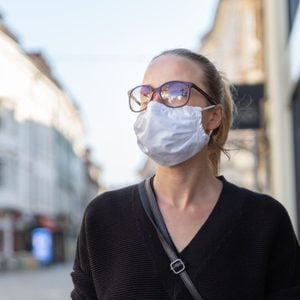14 of the Most Shocking Safety Statistics
Updated: Jun. 30, 2022
Life comes with risks, but that doesn't mean you need to become a statistic. Here's what you need to know to protect yourself from injury—or worse.
Shocking U.S. safety facts
Until very recently, accidental injury was the third leading cause of death in the United States. (It just fell to fourth, displaced by Covid-19.) Someone is accidentally injured every second and killed every three minutes by a preventable incident, including drug overdose, car crash, fall, and drowning, according to the National Safety Council (NSC).
While you can’t eliminate all risk from your life, sometimes the simplest things can make the biggest difference. “Being aware and proactive can help prevent injuries and save lives,” says Kelly Nantel, vice president of communications and advocacy for the NSC. A few easy steps you can take to reduce your risk of an accident: Buckle up every time you get in the car, empty medicine cabinets of unused or expired meds, and make sure your home is clear of tripping hazards. And keep an eye out for these 10 sneaky backyard dangers.
More than 38,000 people died in car crashes each of the last three years
Although the United States has seen a small drop in highway deaths, an estimated 38,800 people died in car crashes in 2019, according to the NSC. That’s a 2 percent decline from 2018 and a 4 percent drop from 2017. The states with the biggest increase in fatalities: Maine, Wyoming, and Delaware.
And then there’s the ripple effect when an accident happens: Last year alone, about 4.4 million people suffered injuries in a car crash that were serious enough to require medical attention. See how one woman’s odds of survival were just 100 to one.
 Distracted driving kills about nine people every day—and injures more than 1,000
Distracted driving kills about nine people every day—and injures more than 1,000
Any sort of distraction—whether it’s your cell phone or a screaming toddler in the backseat—can be a problem, as this statistic from the Centers for Disease Control and Prevention (CDC) illustrates. “There is really no such thing as multitasking,” says Federico Vaca, MD, professor and vice-chair of faculty affairs at the Yale School of Medicine’s Department of Emergency Medicine. “When you pay attention to something else, you’re paying less attention to the thing you were doing.” That’s particularly problematic on the highway, he adds, when you can take your eyes off the road for just two seconds before you run into some serious issues.
You have a greater chance of dying from an opioid overdose than in a car crash
Americans have a one in 98 chance of dying from an opioid overdose versus a one in 106 chance of dying in a car accident, according to the NSC. The drugs most often responsible for these deaths include fentanyl, fentanyl analogs, and tramadol. How can you protect yourself?
“Individuals must serve as their own health-care advocate,” Nantel says. “They need to ask questions when they’re being prescribed pain-relieving medication, such as, ‘Am I being prescribed an opioid?’ and, ‘If so, is there a non-addictive alternative?’ ”
More than 250 people died while taking selfies between 2011 and 2018
That desire to get the perfect selfie can be deadly, according to research published in 2018 in the Journal of Family Medicine and Primary Care. Men in their 20s are especially prone, the study suggests. “People live and die by social media—and with these crazy pictures,” says Dr. Vaca. “But there’s no picture that’s worth your life.” Researchers recommend “no selfie zones” in tourist areas, especially around rivers, lakes, and oceans; on mountains; and over tall buildings.
Workplace injuries occur every seven seconds
Here’s another way to wrap your brain around that number: If a worker is hurt every seven seconds, that translates to 12,600 per day and 4.6 million per year, according to the NSC. The top three culprits? Overexertion; injuries resulting from objects and equipment; and slips, trips, and falls. Even though more people are working remotely now, due to Covid-19, that doesn’t necessarily translate to fewer injuries.
“There’s potential you could slip and fall in the home, too,” says Leigh Vinocur, MD, a board-certified emergency physician in Baltimore and spokesperson for the American College of Emergency Physicians. Check out the everyday objects that could land you in the ER.
75 percent of preventable accidents take place in the home
The world seems like a big, scary, unpredictable place. In fact, the NSC found that an overwhelming majority of people are most fearful of things that will likely never happen to them, such as murder (80 percent). But the reality is that most accidents happen at home or close to home. While everything from falls and fires to choking and drowning incidents can take people by surprise, says Dr. Vinocur, opioid overdoses also factor into the equation—and the rising number of preventable deaths.
Drowning kills more children between the ages of 1 and 4 than anything except birth defects
Every day, about 10 people die from unintentional drowning. Two of those 10 are under the age of 14, according to the CDC. Some of that is a reflection of this painful reality: Drowning doesn’t always look like it does in the movies. So people can be slow to realize what’s happening.
“With children, there will be very little noise,” says Dr. Vaca. They often “fall in and don’t know how to tread water, so they just go under. If they scream, they suck water into their lungs.” To keep kids safe, be hyper-vigilant when they’re around water because you have mere minutes before a lack of oxygen can irreparably damage the brain, he says. And brush up on these water safety tips that adults don’t follow—but should.
You have a one in 3,748,067 chance of being killed by a shark
Translation: The likelihood that you’ll be attacked by a shark is very, very, very low. In fact, you have a much greater chance of dying from the flu (one in 63) or being struck by lightning (one in 79,746), according to the International Shark File.
“Sharks don’t tend to attack humans,” says Dr. Vinocur. And when they do, it’s usually surfers. “They mistake them for things they eat—like seals,” she explains. “Underwater, a surfboard looks like a seal.”
To lessen your admittedly slim chances of being attacked, don’t wear brightly colored swimsuits or shiny jewelry, stay in groups, and don’t swim in the dark when sharks are particularly active.
Almost 20,000 people head to the ER each year due to grill-related injuries
Nearly half of those injuries were from thermal burns; children under the age of five made up 39 percent of those hurt, according to the National Fire Protection Association (NFPA). Home fires are also a very real risk when grilling. During the same four-year period examined by the NFPA, fire departments reported 8,900 fires each year—from 2014 to 2018—involving grills, hibachis, or barbecues.
To avoid accidents, “keep children away from the grill,” says Dr. Vinocur. “Pick a ventilated area—don’t grill on a balcony, in the garage, or indoors. And wait until the grill is completely cooled down before you clean it.” Here are 50 other summer health dangers you’re probably ignoring.
Playground injuries send more than 200,000 children under 14 to the hospital each year
Bumps and bruises might be expected when children are set free on a playground, but this fun zone can quickly turn into a danger zone. More than 10 percent of the 200,000-plus children who need medical attention after a trip to the playground are treated for traumatic brain injuries like concussions, according to the U.S. Consumer Product Safety Commission. Kids are also at risk of burns from slides, swings, and other equipment.
But you don’t have to be a helicopter parent to keep your kids safe. Just be aware of the dangers. “Check for hazards, such as improper ground surfaces, overcrowded play areas, and sharp points and edges,” says Nantel. “In addition, children shouldn’t wear or play with anything that could get on playground equipment and be a strangulation hazard.”
A violent crime occurs every 26.2 seconds
In 2018, that included a murder every 32.5 minutes, a rape every 3.8 minutes, and a robbery every 1.9 minutes, according to the Federal Bureau of Investigation. Property crimes occurred even more frequently.
A little deterrence goes a long way, so make sure to lock windows and doors, reinforce weak entry points, use motion-sensing lights, and, if your budget permits, install a home security system. “There are home security systems you can access from your phone,” says Dr. Vinocur. And don’t forget to keep your car locked. “People lock up their home, but they leave their car unlocked in the driveway with the garage door opener in it,” making it easy for an intruder to get into your home, warns Dr. Vinocur.
Around 1,342 people will die this year from hypothermia
That’s the yearly average of the 13,419 hypothermia-related deaths that occurred between 2003 and 2013, accordion got the CDC. In the winter, be sure to heed warnings about extreme weather. It takes as little as 10 minutes for hypothermia to set in, in minus-30- degree temps. Something else to keep in mind: When your body is wet, it loses heat more quickly, so you can experience hypothermia in as little as 10 minutes in 41-degree waters. Here are some other surprising signs of hypothermia that are too easy to miss.
More than a quarter of a million children incurred serious injuries from toys in 2018
These injuries were severe enough to send families to the emergency room, according to the CPSC, though 96 percent of those children were treated and released. There were slightly more toy-related deaths in 2018 than in previous years: 17, to be exact, with non-motorized scooters, rubber balls, and balloons associated with about 35 percent of them.
“The number one thing is to get your kid toys that are age-related,” says Dr. Vinocur. “You have to think about protective equipment with older kids and choking hazards with little kids. If a toy can fit through a toilet paper roll, it’s too tiny to give a toddler.”
Approximately one in 25 patients in a health-care facility develops a secondary infection
When people are being treated for one issue, many will also contract an infection such as MRSA, pneumonia, surgical-site infections, urinary tract infections, or central-line bloodstream infections, according to the Office of Disease Prevention and Health Promotion. It’s enough to make you postpone treatment indefinitely. And with the Covid-19 crisis, many people were in fact delaying treatment for a variety of health issues, says Dr. Vinocur.
“People were afraid to go to the hospital because they were afraid of getting Covid,” she says. “But hospitals have gone to great lengths to keep people separated and reduce transmission. Systems are in place so that it’s safe to go to the hospital.”
Check out the six places you’re most likely to catch coronavirus.


